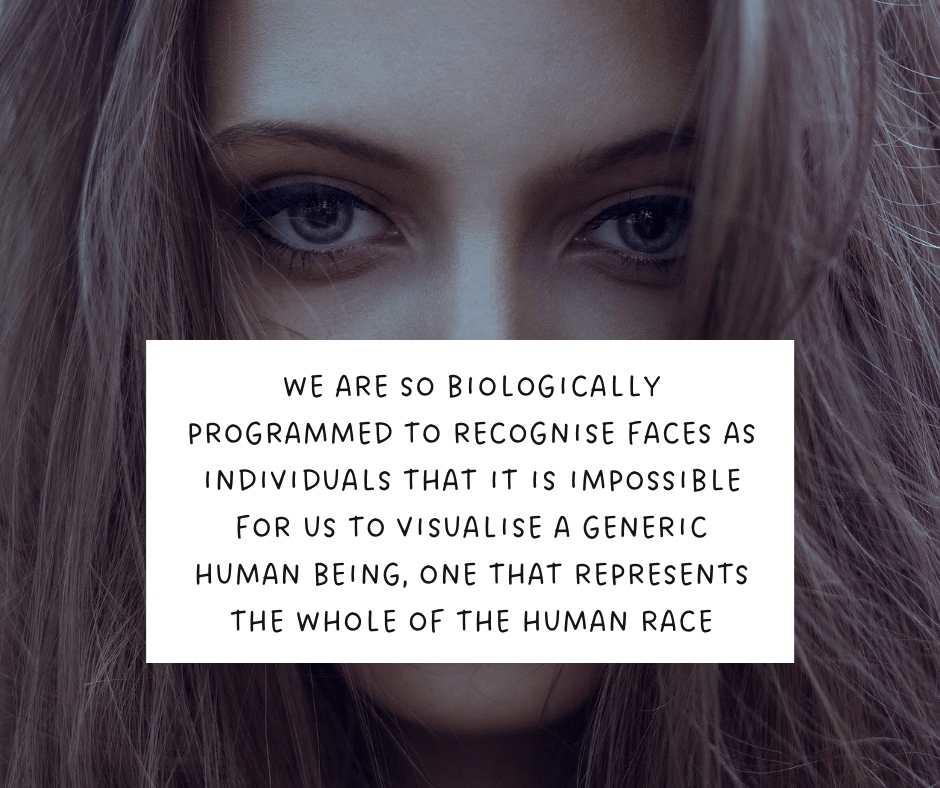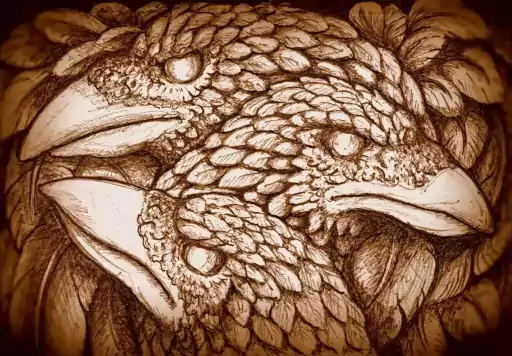WHO IS a HUMAN GUIDE?
When doing a shamanic journey, the practitioner enters into a deeper, shamanic reality and personally experiences how everything is connected. However, in journeys, true power and wisdom come not from the practitioner themselves, but from their ability to let greater, wiser spirits (their Guides) work through them. As well as the practitioner’s Power Animal, their Guides can include Human ones too.
HUMAN GUIDE IS AN OVERSOUL
In Therapeutic Shamanism, the Human Guides that we choose to work with are not middle-world individuals, but Lower-World and Upper-World beings. As such, they are representations of the Human Oversoul — the archetypal pattern that all humans come from.
… BUT WE EXPERIENCE THEM IN A MORE INDIVIDUALISED FORM
So, to us, these Guides appear as being from a particular culture, having a particular appearance, age, personality, and so on. And of course, whilst the imagery that we decide to use is personal to us, it will often be culturally influenced as well. Different cultures will inevitably use different symbolism and imagery to describe the shamanic realms and spirits.
Because Human itself is too vast and nebulous for us to get hold of, we clothe it in particular imagery, into particular human forms that we can work with and relate to.
Think about the different imagery that different cultures use to flesh out and describe the Upper-World, from Renaissance paintings of heaven, through to paintings of Buddhas, Hindu gods and goddesses and so forth. They are the same underlying archetypal themes and energies, but expressed in different cultural imagery and details.

It is impossible for us to imagine all different races, genders, ages, skin and eye colours, type of hair, in one single human being. Because of this, our Lower-World Human Guides will appear to us in a particular form. They may appear to be Native American, Australian aboriginal, ancient Welsh, Sammi, Toltec, or of some other culture. Moreover, they will be dressed in a particular way, have skin and hair of a particular colour, have a particular body type, and so on.
CHOOSING HUNTER-GATHERER ANCESTORS AS YOUR PRIMARY HUMAN GUIDES
Because of how deeply broken our relationship with the Earth is, I always encourage students to choose Lower-World Human Guides that represent a pre-domesticated, pre-agricultural, animist way of life. This has got absolutely nothing to do with romanticising the past, a charge that is sometimes aimed at modern shamanism. I am fully aware that our hunter-gatherer ancestors were not living in paradise, I am no such romantic! They would of course have had problems and hardships to deal with, including sickness, injuries, interpersonal conflicts, bereavements, times of food scarcity, bad weather and all sorts of other issues. There is plenty about it that would have been tough.
However, it is nonetheless also true that, of all the people that have lived on the earth, animist, hunter-gatherer cultures have been the ones who have had the closest, most intimate, most sustainable and balanced relationship with the Earth.
Hunter-gatherer cultures have been the ones who have had the closest, most intimate, most sustainable and balanced relationship with the Earth.
EXAMPLE: My own main Human lower-world Guide appears to me as a woman in her mid-thirties
Unlike my Power Animal, she has a name as an individual. Physically, she is of medium build and height, has blonde hair that she usually wears tied into two plaits. Her clothes are made of green buckskin — usually a plain tunic, pants and soft boots, and she has a tattoo done in black ink of a lizard on the inside of her left forearm. Generally, the only jewellery she wears is a bone carving of a raven on a leather thong around her neck.
Culturally, she appears to be of Finno-Ugric origin, and from the ancient people that lived in what is now the Finland/Sweden geographical area. Her personality is very definite and clear, emotionally steady, positive, confident, strong, capable, and focused. She is quiet, and at the same time playful, making me laugh and smile a lot; compassionate and warm, and yet takes no crap whatsoever from anyone or anything. When needed, she can be incredibly fierce, and I know she can take care of herself and of me. Moreover, she is highly ethical. Her Power Animals are the same as mine, although she also works with Lizard too. She is a gifted shamanic healer, with an extensive knowledge of the healing properties of animals, plants and stones.
What I am trying to get across is that I experience my main Lower-world Human Guide very much as a real, individual person that I know. Although she may not have a solid physical body, to me she is no less real. She has a complex and fully-developed personality. I experience her as having an existence independent of me. She is not a figment of my imagination, or a sub-personality, or a part of my psyche, but an autonomous being that I have a close, personal relationship with.

CULTURAL APPROPRIATION?
In terms of cultures — Finno-Ugric, Berber, Turkic, Mongolic, Dravidian, and so on — all are human-created middle-world things. They do not exist in the Lower-World.
Remember, your Human lower-world Guide is simply a face that you put on Human.
You can have a Tuvan middle-world ancestral guide, but the Ancestors in the Lower-World are all just aspects of Human — faces we put on Human in order to relate. Human is all humans, the Oversoul to which all humans belong. I said that my Lower-World Human Guide appears to be of northern Finno-Ugric origin. I did not say that she actually is Finno-Ugric. She is no more that than she is actually blonde or of medium build. Rather, she is the principal way I relate to the Lower-World Human Oversoul, the face I put on it in order to be able to relate to it.
Lower-World Guides will not teach you shamanic techniques and knowledge that belong only to a specific human middle-world culture, because they are not of any such specific cultures, despite their physical appearance. Rather, your Lower-World Guides will teach you Shamanism in a bigger sense, not a shamanism that belongs to any one culture. As such, this teaching from the Human Oversoul belongs to all humans. There is no cultural appropriation this.
CAN WE HAVE MORE THAN ONE HUMAN GUIDE?
It is common to have at least one main Human Lower-World Guide. It is not necessarily a lifelong relationship, though often it will be. Eventually though, other Human Guides will appear for you in the Lower-World too. These Guides may be relatives of your first Guide. Or they may have no relationship with your first Guide, and may even appear to be of a different tribal culture altogether.
What you will find is that different Human Guides have different temperaments and personalities. Often they have different shamanic specialisms.
Some of these Guides will only show up when a journey involves a particular thing they are adept at. Some Guides will be especially skilled at soul retrieval, others may specialise in extraction work, or in dealing with the souls of the dead, or in plant spirit medicine, and so on. Each of them can teach you about their speciality if asked, and so your shamanic work will gradually deepen and broaden in scope if you work with them.
WORKING WITH HUMAN GUIDES
It is important to understand the Lower-World Guides are beings from the Lower-World; the world of Nature. As such, they know nothing about present-day human society. They know nothing about bank accounts, insurance policies, mortgages, the law, the career ladder at work, financial investments, paying bills, which is the best fridge to buy, reggae, or a thousand other human middle-world things.

In fact, if they talk to you a lot about anything at all then, they are unlikely to be a true Lower-World Guide! Words are a middle-world things, and the Lower-World is mostly beyond human speech — my Guides use words quite rarely.
They are not there to make middle-world decisions for you. Your life is your life, and you still have to be an adult, and make your own decisions when it comes to everyday, middle-world issues.
That is not to say that they are of no help in daily life, as they can be a great deal of help with certain middle-world things. They can warn you if they sense that you are in danger. They can protect you energetically and psychically. They can show you why the energy in a room feels odd, and what to do about it. They can show you how to ‘feng shui’ your home and garden, so that the energy does not stagnate but flows freely instead. They can show you how to bond with the land, and work with the spirits who live there. They can bring your attention to particular plants, stones, or animals that have healing and teaching for you. What they are not though is the parking-spot fairy. Nor are they some parent-like figure who makes all the decisions in life for you.
FIND YOUR HUMAN GUIDE
Want to learn more about shamanic journeying and working with Human Guides?
Join us for the Next Steps 1 course and learn:
- more in-depth explorations of the lower world
- advanced hollowing-out practices
- about finding and working with human lower-world guides
- the air, fire, water and earth transformation practices (burials, burnings, dismemberments, sky burials, dissolvings and water burials, cocoonings, poisonings, shapeshifting).




